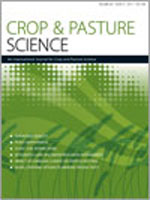Downy mildew (Hyaloperonospora parasitica) is a problem for canola production worldwide, including in Australia where it has remained a persistent threat since 1998. Testing of 131 Brassicaceae varieties, including 109 Australian canola varieties (Brassica napus and B. juncea) and 22 diverse Brassicaceae (including B. napus, B. carinata, B. juncea, B. nigra, B. rapa, Crambe abyssinica and Raphanus sativus) highlighted excellent resistance to downy mildew. Using a mixture of 10 H. parasitica isolates, R. sativus Colonel and Boss showed highest resistance to H. parasitica, with per cent disease index (%DI) values of 3.7% and 10.2%, respectively. These were followed by (%DI values): B. carinata ATC 94011 (11.1%), B. napus CB™ Tanami (14.1%) and Komet-741 A (14.3%), B. juncea 397.23.2.3.3 (14.8%), B. napus ATR-Banjo (16.9%), Hyola 575 CL (16.9%), Komet-744 A (18.1%), Cresor-770 B (18.5%), Wamus (18.5%), Surpass 400 (19.2%), Hyola 432 (19.4%) and Hyola 76 (19.4%), and C. abyssinica (19.9%). These varieties were also considered highly resistant. Another five B. juncea genotypes and B. nigra P.23845 were considered highly resistant with %DI of 22.2%. Those considered resistant (but not highly resistant) included hybrid B. napus Hyola 444 TT, Hyola 500 RR, Hyola 504 RR, Pioneer 46Y78, Pioneer 45Y77 and Hyola 650 TT, and the non-hybrid variety ATR-Eyre, all with %DI values 23.1–28.2%. By contrast, B. napus Thunder TT, Hyola 450 TT and ATR-Grace were highly susceptible with %DI values of 90.3%, 88.2% and 81.7%, respectively. Cluster analysis revealed six distinct clusters (highly resistant, resistant, moderately resistant, moderately susceptible, susceptible, very susceptible) for the tested Brassicaceae genotypes that, on average, showed similar responses within each cluster against H. parasitica based on their %DI values. From 2000 onwards (with the exception of Surpass 400), 10 B. napus varieties and one B. juncea released were classified as highly resistant; however, there was no overall correlation between year of variety release and level of resistance expressed against H. parasitica. This is the first study to demonstrate the existence of very high levels of pathotype-independent resistance in Australian canola varieties to H. parasitica. The most resistant varieties identified can be used in canola breeding programs and also directly deployed into regions where downy mildew is prevalent, providing the canola industry with an immediate and effective option for management of this important disease.
How to translate text using browser tools
29 March 2017
New resistances offer opportunity for effective management of the downy mildew (Hyaloperonospora parasitica) threat to canola
A. E. Mohammed,
M. P. You,
M. J. Barbetti
ACCESS THE FULL ARTICLE

Crop and Pasture Science
Vol. 68 • No. 3
April 2017
Vol. 68 • No. 3
April 2017
disease management
disease screening
host resistance
oilseed rape




